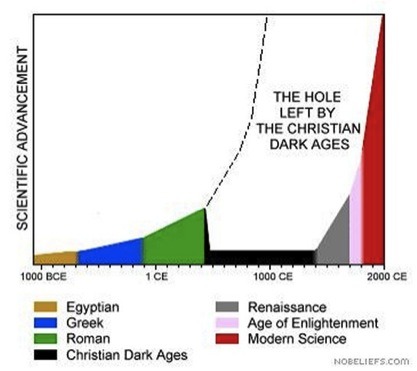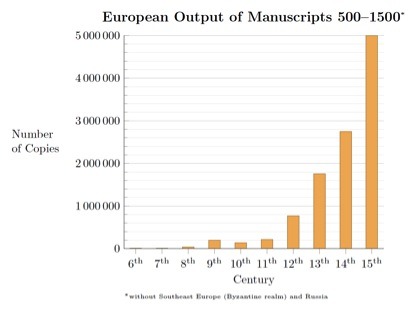#history of philosophy
Earlier to Later Heaven: Fugue VI Beyond Descartes - Part 1


(continued from here)
In this post we take a short detour within our current central topic, that of relationship of Earlier Heaven and Later Heaven arrangements of the trigrams. The new material included here grew out of ruminations on the aforesaid primary topic though, and is actually not so much a detour as a preparing the way for what I hope will be the eventual solution of our problem at hand.
Mandalic geometry, as we’ve seen, is fully commensurate with the coordinate system of Descartes, but its principal forebears lie elsewhere. It is derived largely from Taoist and pre-Taoist thought structures, most importantly the I Ching, the earliest strata of which were formed before the separation of rational and irrational thought in the history of human cognition. As a result it is capable of far exceeding the possibilities of the Cartesian coordinate system, a product of the Enlightenment and Age of Rationalism. It offers geometry the possibility of a structural fluidity and a functional variability that Cartesian geometry lacks.[1]
From the very beginning of this project I’ve been much puzzled by the lack in traditional Chinese thought of a symbol corresponding to the zero of the Western number line and number theory.[2] Traditional Asian thought does not uniformly lack a zero symbol.[3] And yet the I Ching and Taoism manage well enough without one, electing to base their numerical relationships instead entirely on combinatorics involving permutations of yinandyang – what we in the West call negativeandpositive – through multiple dimensions. It is an entirely different perspective arising out of a very different worldview.[4]
What Taoism invented in the process was a unique, thoroughly self-consistent brilliant system of logic/geometry/combinatorics which has been masquerading, all these many centuries, as “just a method of divination.”[5] In essence, Chinese thought invented a discrete number system and geometry, one based on vectors rather than scalars, a vector geometry that can be extrapolated to any desired number of dimensions. The I Ching settles for just six, the first whole number multiple of three. That is complicated enough.[6][7]
(continuedhere)
Notes
[1] For one example of the advantages such variability and fluidity offer, in this particular case in creating dynamic, phase-shifting forms of nanomaterials, see here.
[2] For a short history of the concept of zeroseeWho Invented Zero?
[3] The West, after all, derived its zero symbol ultimately via India.
[4] One might well speculate whether the significant root difference in world view between traditional Indian and Chinese thought lay in the fact that Indian mathematicians could have created a Zero out of nothingness (Śūnyatā), a key term in Mahayana Buddhism and also some schools of Hindu philosophy while Taoist thought did not include a concept of nothingness. Instead it conceived of a formlessness prior to manifestation. In Taoist cosmology Taiji is a term for the “Supreme Ultimate” state of undifferentiated absolute and infinite potential, the oneness before duality, from which yinandyang originate. So it might be that lacking a concept of nothingness forestalled invention of a zero symbol. Still, it also allowed creation of an original, unique holistic philosophy of reality, found perhaps nowhere else.
[5] The Russian philosopher, mathematician and authorPeter D. Ouspensky (1878-1947) relates an apocryphal legend regarding the origin of the Tarot, the moral of which has significance also to the history of the I Ching.
[6] In its emphasis on vector analysis and primacy of dimension the philosophy which underlies the I Ching and mandalic geometry shares some characteristics of Clifford algebra.
[7] One of the important things with respect to physics I hope to show with mandalic geometry is that it is possible to construct an integrated geometrical / logical system which is self-sufficient and self-consistent, capable of modeling interactions of subatomic particles of the Standard Model and then some. This goal is, I believe, approximated in mandalic geometry by meticulous coupling of the methodologies of composite dimension and trigram toggling, although it quickly becomes apparent that a system based upon what is after all a relatively small number of dimensions - six in the case in point - becomes vastly complex and difficult to follow, at least initially. One can’t help wondering how physics will be able to correlate all the intricate data resulting from its countless particle accelerator collisions and combine it into a consistent whole without some very fancy mental acrobatics on the part of theoretical physicists. Without a suitable logical scaffold that might take an inordinately long time to achieve.
© 2015 Martin Hauser
Please note: The content and/or format of this post may not be in finalized form. Reblog as a TEXT post will contain this caveat alerting readers to refer to the current version in the source blog. A LINK post will itself do the same. :)
Scroll to bottom for links to Previous / Next pages (if existent). This blog builds on what came before so the best way to follow it is chronologically. Tumblr doesn’t make that easy to do. Since the most recent page is reckoned as Page 1 the number of the actual Page 1 continually changes as new posts are added. To determine the number currently needed to locate Page 1 go to the most recent post which is here. The current total number of pages in the blog will be found at the bottom. The true Page 1 can be reached by changing the web address mandalicgeometry.tumblr.com to mandalicgeometry.tumblr.com/page/x, exchanging my current page number for x and entering. To find a different true page(p) subtract p from x + 1 to get the number(n) to use. Place n in the URL instead of x (mandalicgeometry.tumblr.com/page/n) where
n = x + 1 - p. :)
-Page 277-
Discovering the Women at the Heart of Philosophy
By Anna Ezekiel
Academic philosophy, especially in the west, has long had a reputation as the near-exclusive domain of white men. These days, however, there is growing interest in philosophy by historical women and in philosophical traditions from other parts of the world. The rediscovery of neglected texts from outside the mainstream has made it increasingly clear that women have always done philosophy, even where this work has been obstructed, lost, forgotten, misattributed, unacknowledged, or plagiarized. Now, academic studiesandpopular op-eds alike are calling for philosophy to recognize that a narrow focus on only some kinds of thinkers at the exclusion of others forecloses possibilities for thinking and seeking out truths, rather than pursuing them.
Post link
Nietzsche’s Eternal Return
Why thinkers of every political persuasion keep finding inspiration in the philosopher.
By Alex Ross
It takes a strong philosopher to assume control of a preposition and propel it into a foreign language. That is what Friedrich Nietzsche did with the word über. In German, it can mean “over,” “beyond,” or “about.”
Post link
4 Black Philosophers to Teach Year-Round
Weaving philosophy lessons into your curriculum can tease out bigger questions about identity, human rights, and artistic expression.
When Liam Kofi Bright was five years old, he spent a long time obsessing over the difference between a big number and a small number. Eventually, Bright decided that anything over four was big and anything below four was not. When his mom asked him, “What about four?” he started crying.
Post link
As a very serious adult, with a respectable career and life, and a healthy ability to let petty shit slide, I spent much too much time last week arguing with strangers on the internet who believe in the myth of the Dark Ages.
The arguments in question focused on a massively inaccurate meme, which some observers of the group pointed out was originally supposed to be about knowledge loss after the burning of the Library of Alexandria, but which some very cool EDGE LORD had changed to be about ‘The Christian Dark Ages’. Please feast your eyes on it in all it’s massive wrongness:

This is, pretty obviously, a bunch of honkey bullshit and also massively incorrect, as many important scholars have noted. As a result, I spent hours of my life – which I will never get back - pointing out repeatedly that the ‘graph’ in question has nothing to do with reality, and arguing with non-experts about the medieval period.
For the most part – these people were well-meaning. Many pointed out that this was a very Euro-centric world view, and that Asia, Africa, and the Arab world were all making huge advancements in scientific and medical theory at this time. That is absolutely true. White people have never been the entire world. The Chinese had a massively advanced scientific culture by this time, for example, and had been holding it down with hermetically sealed research laboratories since the third century BCE. The Arab world, meanwhile was compiling treatises on eye surgery. Scientific advancement was something that was happening in this period. Europe is not the centre of the world.
Having said that, while it is important to acknowledge that the-rest-of-the-world was making huge strides in scientific advancement during this time, and that Europe and white people are not the entire world, nor responsible for all of human advancement, there was no such thing as the Dark Ages in Europe either.
While everything about the idea of the Dark Ages is incorrect, lets start off with the way the term was meant to be used. The totally ignorant graph above, unsurprisingly, is completely fucking off. Hilariously, the idea of the ‘Dark Ages’ actually originated in the medieval period itself. Petrarch – the poet laureate of fourteenth-century Rome - was actually the originator of the idea that there was a period of stagnation that Europe was moving out of. Petrarch had a political axe to grind. He considered that any point at which Rome – where he lived and worked and had considerable sway – did not completely dominate the world was a BAD TIME. This is not an unbiased assessment of world history.
The actual phrase ‘Dark Ages’ itself derives from the Latin saeculum obscurum, which Caesar Baronius – a cardinal and Church historian - came up with around 1602. He applied the term exclusively to the tenth and eleventh centuries. However, and very significantly in his use of the term, Baronius was not decrying a state of scientific malaise, or a particularly turbulent political period – he’s talking about a lack of sources surviving from that time. Indeed, Baronius sees the cut off point for the dark ages to be the Gregorian reforms of 1046, following which we see a massive increase in surviving documentation. Witness an actual useful chart:

When we move into a period where there are more texts to be considered, Baronius argues, Europe moved out of the period of darkness and into a ‘new age’.*
Now this is some real talk. As you can tell from that graph, during the Carolingian Renaissance of the ninth century, we see a flurry of Latin writers emerge, and a lot of text copying. This drops off again until what we term the Twelfth-Century Renaissance – home to this blog’s favourite philosopher/proto-Kanye – Abelard. (Shout out to my boy.) However, when people use the term ‘Dark Ages’ now, they usually use it to talk about the entire millennium of the Medieval period, and they aren’t talking about source survival. They aren’t thinking ‘dark’ as in ‘occluded’, they are thinking ‘dark’ as in pejorative.
We can thank the Enlightenment historiography for the expansion of the idea that the medieval period was a bad dark time. KantandVoltaire in particular liked to see themselves as a part of an ‘Age of Reason’ as opposed to what they saw as the ‘Age of Faith’ of the medieval period. To their way of thinking, any time that the Church was in power was a time of regressive thinking. The Middle Ages, then, was a dark time because it was so dominated by religion.
The first push back against the term dark ages began with the Romantics. After the, um, unpleasantness of the Reign of Terror, and the major cultural and environmental upheavals of the Industrial Revolution it became fashionable to look at the medieval period as a time of spiritual focus, and environmental purity. Obviously this is a super-biased way of looking at the period – just like it was biased for Enlightenment thinkers to take one look at the primacy of the Church and declare an entire millennium to be bad. I mean, really what the Romantics were doing was just casting shade on the Enlightenment historiography because they felt like it inevitably led to the guillotine. But what can you do?
By the twentieth century historians had moved on from the idea pretty much completely. If you take the time to actually, you know, study the medieval period, it becomes very apparent very quickly that there was a tremendous amount of intensive thought happening. This is the era of Thomas Aquinas – a bad ass philosopher who will think you under the fucking table. Of Hildegard of Bingen – who basically founded scientific natural history in the German speaking lands. Hell, like we talked about last week Rogerius and Giles of Corbeil were throwing it down for major medical advancement. There was a lot going on. On the real, without the contributions of medieval thinkers you would not get Galileo, Newton, or the Scientific Revolution. The medieval period was not a period of stagnation, it was a time of progress.
But it’s not just that the idea of a ‘Dark Ages’ makes no sense when you look at what incredible advancement was happening at the time, it also makes no sense because it implies that stuff was going really well under the Romans. We estimate that somewhere between thirty to forty percent of the population of Italian Rome were slaves. The Romans had total bans on human dissection, meaning that there was no real way for medicine to progress any further than it had by the time of collapse – a problem that medieval people didn’t have. I mean even if you just want to make it about religion - the Roman Empire was Christian at the time of its collapse and had its heads of state worshipped as LITERAL GODS during the pagan era. Somehow every edgy motherfucker with a fedora is totally cool with this and thinks it is super reasonable though. Because ¯\_(ツ)_/¯. The Romans were not a bunch of really awesome people living a life of idealised rationality any more than medieval people were all ignorant savages living in fear of God.
Is there a time that historians use the term ‘Dark Ages’? Yeah, we do use it to talk about source survival rates. It’s not a term we use as a value judgment, however. We just mean that we don’t have a lot of evidence to go off of. By the same token – if we somehow move on to another electronic format without converting the way things are stored now, we could be moving into a theoretical Digital Dark Age, where historians in the future won’t be able to study what we are writing now. (And that would be a tragedy, because legit, I would killto be a historian working on Donald Trump’s tweets in the year 2717.)
We’re now moving away from using the term Dark Ages at all, however, because of the frequency with which it is misinterpreted. I mean, if every basic motherfucker out there who never bothered to read God’s Philosophers (hat tip to James Hamman – this book is amazing) will insist on willfully misinterpreting us, we just ain’t gonna give them the ammo.
What it comes down to is that the medieval period was as vibrant as any other period of history. If you’re going to player hate, go ahead, but please don’t act like you know anything about either medieval or ancient history when you do. There is no period of rational supermen followed by ignorant monsters. There are just people doing their best in the circumstances.
* Caesar Baronius, Annales Ecclesiastici Vol. X. (Rome, 1602), p. 647. “Novum incohatur saeculum quod, sua asperitate ac boni sterilitate ferreum, malique exudantis deformitate plumbeum, atque inopia scriptorum, appellari consuevit obscurum.”
Ontological pluralism
Harry Potter exists. He just exists in a different way to you; and the degree to which he exists is lesser than the degree to which you exist—or so the ontological pluralist might say.
Isn’t this absurd? Let’s take a step back and ask what we mean by ‘exist’. This is an important question of ontology which has massive ramifications for how we see the world. For perhaps existence has different strands.
Restriction
I’ll go first: something exists if it is real, that is, a feature of reality. But this circularity doesn’t clear up anything at all. What counts as real?
Most people feel comfortable in saying material things are real. Tables and electrons exist because they are physical. Fine. But what about everything else? We don’t want to unnecessarily restrict the domain.
Do numbers exist? What about the property of being red, the love of a couple, one’s gender, a shadow, and an instance of depression? Will you deny their existences because none is construed as physical? The lines are more blurred than you first thought.
Race
Consider the importance of these questions through the following example in social ontology.
Does race exist? Some claim that it doesn’t: that there is no scientific basis for dividing us by it. However, one potential consequence of this claim is that discrimination of racial groups isn’t real. For if we aren’t distinguished in race, who exactly is being discriminated?
By raising the bar of existence too high we cannot properly assert discrimination. But will we really deny discrimination’s existence simply because, biologically, the features of human individuals vary according to a sliding scale and not according to distinct racial groups?
A contrario, discrimination is formed in our minds and is present in our language and our decision-making: in how we talk to each other, in implicit bias, in governments spending less on housing and education and hospitals in certain areas, and so forth. History clearly tells us that certain groups of people are discriminated more than others.
To turn the problem on its head: race is real precisely because we perceive the differences between people in our minds.
Degrees of being
Contemporary metaphysician Kris McDaniel offers a compelling account of ontological pluralism in 2017’s The Fragmentation of Being, authorising different ‘modes’ of being. When invoked in language these modes are more restricted than the generic concept of existence and ‘analogous’ to each other (a concept borrowed from medieval philosophy). To quote Aristotle, ‘Being is said in many ways.’
That there are multiple modes of existence has a long history as an idea in philosophy. Aquinas didn’t believe that God and creatures exist in the same way and said mind-dependent objects are merely ‘beings of reason’. Similarly, Leibniz discerned the absolute existence of monads from the attenuated existence of everything else. Meinong defined two modes of real objects: concreta (e.g. physical objects) and subsistence (e.g. timeless facts about physical objects). Heidegger identified ways of being in Existenz (of creatures), subsistence (of abstract objects), readiness-to-hand (of equipment), and presentness-at-hand (of matter). Gilbert Ryle claimed ontological pluralism is motivated by the idea that it is ridiculous to claim that ‘exist’ is deployable for radically different things, such as God and the number two. You get the point.
Like his peer Ted Sider, McDaniel claims there are different ‘quantifiers’ for asserting existence with (philosophical jargon). These capture fictional characters as real abstract objects (with whatever our best theory is, according to Peter van Inwagen,à laQuine).Things in the past exist, too; so do other worlds and holes. They are all simply impoverished in their being. They are ‘beings-by-courtesy’.
If you still reckon this doctrine is too wild, think about existence as follows. Existence is like mass: an elephant and an ant each has mass but the former is more massive. Likewise, in some way, Harry Potter exists; he’s just not as real as you.
(Image credit: Brian Selznick/Scholastic.)
Post link





